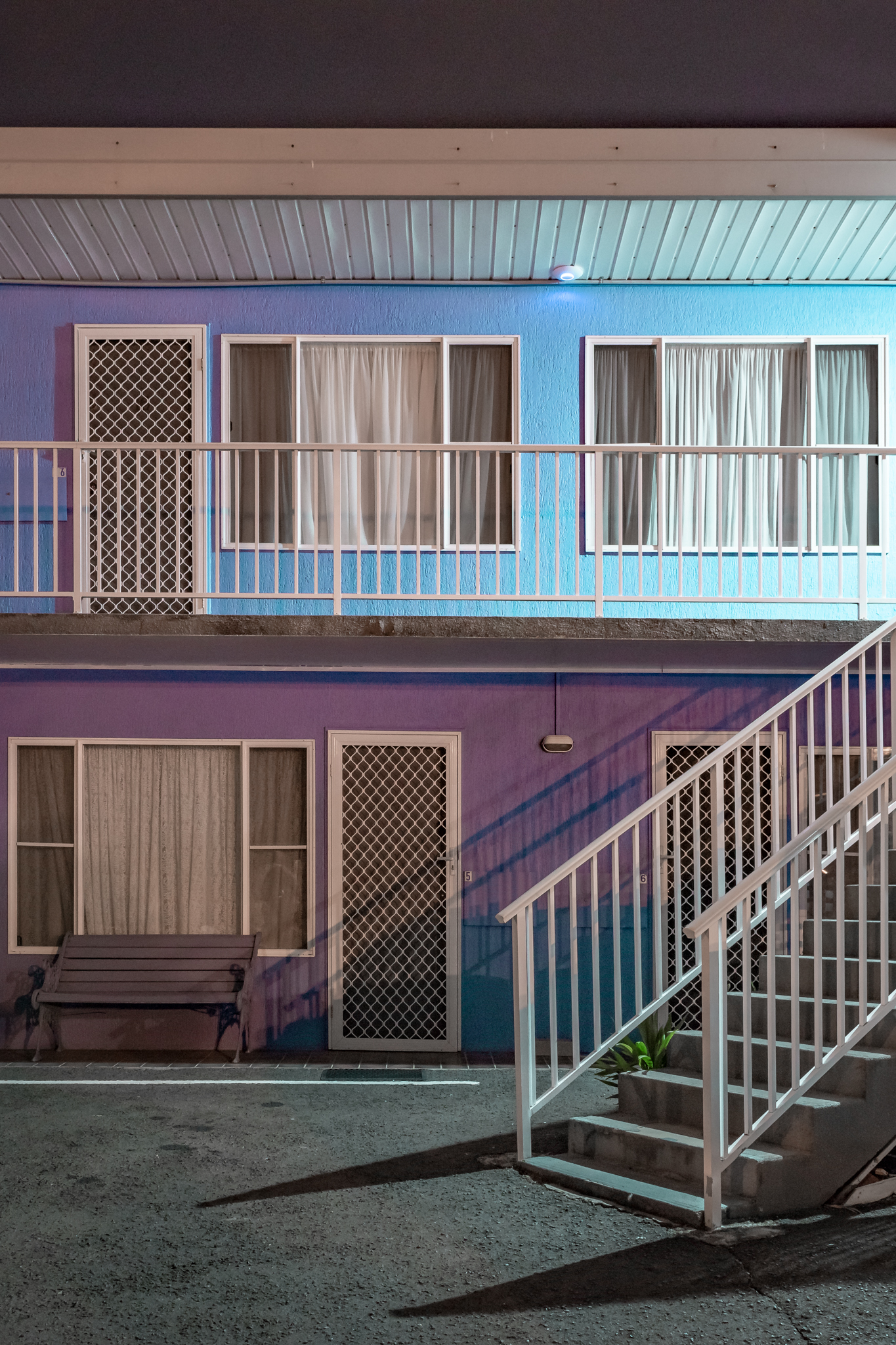The allure of a luxury hotel is easy to explain. Few of us can deny the simple appeal of extreme comfort, luxury, and convenience. Motels, on the other hand, hold an allure that’s altogether more layered. Bells and whistles would only detract from their comforting, yet somehow also melancholic, mundanity.
Now the banal charm of Australia’s own motor inns has been beautifully captured by photographer Brett Patman, whose collection “Hotel Motel 101” features more than 101 different motels within a 170 KM radius of Sydney. At once a homage to motels’ quiet magnetism and a study of geometry and form, his images are a silent celebration of the humdrum.
“I was sitting on this idea for a few years but didn’t know where to start,” Brett tells VICE. “Then one night when I was watching the TV series Mindhunter… the two main characters stay in all these different three-star motel rooms. The more I watched it, the more the inspiration grew. Then one night I made a list of motels along the Hume Highway, and just dove in.”
We asked Brett, who runs Lost Collective—”a visual and written record of the forgotten and neglected built environments that pervade society”—a bunch of questions about the project, including how he chose which motels to include and which he left, literally, by the roadside.
Videos by VICE


VICE: Hi Brett. First of all, why motels?
Brett Patman: Each motel has its own distinct taste, styling, and quirks, and that’s really the essence of what I wanted to capture. It’s that whole notion of creating something beautiful from seemingly mundane everyday scenes. Most of my work has a kind of melancholic seediness to it.

What were people’s reactions to your subject? Did a whole lot of motel fetishists come out of the woodwork?
The most common reaction has been the nostalgic attachment people have to three-star motels and the association of summer family holidays. I discovered in the process that there is a small contingent of people out there with an appreciation for motels; in particular the signage—you know, those iconic ’70s pastel roadsigns laden with neon. And the distinctive typography.

What is it about motels, or about their portrayal in pop culture, that’s gained them cult following?
I guess it goes back to two things: childhood memories and 70s and 80s television pop. When you talk about family summer holidays, there’s a shared sense of feeling [about motels] for so many people. It’s a reminder of a life less complicated, or perhaps more enjoyable times when the weather is generally at its best, and you’re free from any kind of responsibility for a few weeks.
TV has romanticised motel rooms and not always in the sexy sense. The creativity of TV producers/creators has helped to build that fascination and attraction through ephemeral scenes, even though motel rooms actually have a reputation for being some of the most unhygienic places you can stay.

How many motels did you shoot altogether? How did you choose which ones to shoot?
I photographed 102 motels and would have visited close to 120. I had to skip some; sometimes it was too dark to take a photo, other times there were too many cars in the way. Other times people were hanging around, and I didn’t want to have to explain what I was doing.
The motels were organised into three main [highway] runs: heading north towards the Central Coast, West to the Central Western Tablelands, then to the beginning of the south coast of NSW. I made a list of all the motels along the way, or close by, using Google Maps.

The only criteria was that it had to be a traditional motor inn, with the drive-thru reception, parking in front of the rooms, and low rise. I did skip a few of the bigger chain motels. They lacked the character and personal touches you find in privately owned motels: the tacky statues, mismatched smokers’ chairs in front of the rooms, the pastel paint jobs. But I photographed at least 90 percent of the motels I actually visited.







